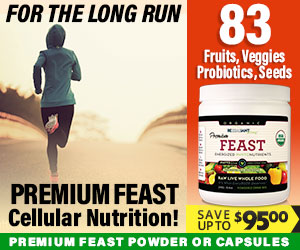Table of Contents
- 1. Superfoods and Whole Grains
- 2. Organic Vegetables for Vitality
- 3. Lean Proteins and Legumes
- 4. Whole Fruits for Natural Sweetness
- 5. Nuts and Seeds for Nutrition
- 6. Fermented Foods for Gut Health
- 7. Healthy Oils for Balance
- 8. Herbal and Spiced Options
- 9. Plant-Based Alternatives
- 10. Sustainable and Local Foods
1. Superfoods and Whole Grains
Rich in Nutrients and Fiber
The best whole foods to eat in 2025 include a variety of superfoods and whole grains. These foods are packed with essential nutrients, fiber, and antioxidants that support overall health. Whole grains like quinoa, oats, barley, and brown rice provide complex carbohydrates that give sustained energy and aid digestion.
Incorporating a variety of superfoods such as chia seeds, goji berries, and wheatgrass into your diet can boost your nutrient intake significantly. These foods not only taste great but also have been linked to reduced inflammation and enhanced immune function.
According to recent research, increasing whole grain consumption can reduce the risk of chronic diseases like diabetes and heart disease. Making these foods a staple in your diet in 2025 is a smart step toward long-term health.
Practical Tips for Including Whole Grains
Start your mornings with oatmeal topped with berries and nuts for a nutritious breakfast. Swap white bread for whole grain options, and add quinoa or farro to salads and sides. The key is varietyâmixing different whole grains ensures you get a broad spectrum of nutrients.
Meal prep by cooking large batches of grains and storing them in the fridge. You can add these to soups, stir-fries, or grain bowls throughout the week, making healthy eating easier and more convenient.
Tip: Look for products labeled “100% whole grain” to ensure you’re truly choosing the best whole foods to eat in 2025.
2. Organic Vegetables for Vitality
The Power of Organic Produce
Organic vegetables remain a top recommendation as part of the best whole foods to eat. They are cultivated without synthetic pesticides or herbicides, which means youâre avoiding chemical residues and supporting sustainable farming practices. In 2025, more people are prioritizing organic produce for health and environmental reasons.
Vegetables like kale, spinach, broccoli, and carrots are high in vitamins, minerals, and phytochemicals that help reduce oxidative stress and promote cellular health. Consuming a rainbow of colors ensures you’re getting a diverse range of nutrients.
Research indicates that organic vegetables may contain higher antioxidant levels compared to conventionally grown varieties, making them even more beneficial. Including these in your diet can lead to better immune support and reduced inflammation.
Strategies for Incorporating More Vegetables
Aim to fill half your plate with vegetables at every meal. Try roasting, steaming, or sautéing them with herbs and spices for added flavor. Remember, batch cooking and prepping prep work can help you incorporate more veggies effortlessly.
Use salads, smoothies, and wraps as vehicle for different vegetables. In 2025, with advancements in organic farming, local farmers’ markets and organic sections in grocery stores make it easier than ever to access fresh, organic produce daily.
3. Lean Proteins and Legumes
Protein Power for Longevity
Choosing the best whole foods to eat in 2025 involves focusing on lean proteins and plant-based options like beans, lentils, and chickpeas. These foods provide essential amino acids, support muscle health, and help maintain a healthy weight.
Recent studies suggest that plant-based proteins can reduce the risk of heart disease and improve metabolic health. Plus, legumes are high in fiber, aiding digestion and keeping you full for longer periods.
Incorporating a variety of protein sources in your diet ensures you meet your nutritional needs without excess saturated fats found in some animal products.
Creative Ways to Include Legumes
Prepare hearty soups, stews, or salads with lentils and chickpeas. Consider substituting meat with beans in tacos or pasta dishes to boost fiber and nutrient content. Using dried legumes and soaking them overnight improves digestibility and flavor.
Additionally, exploring plant-based protein powders or spreads can diversify your options. As awareness grows, more recipes in cookbooks and online focus on these nutritious, best whole foods to eat for optimal health in 2025.
4. Whole Fruits for Natural Sweetness
Variety and Freshness Matter
Fresh, whole fruits are among the best whole foods to eat because they offer natural sugars, fiber, vitamins, and antioxidants. Think apples, berries, oranges, and bananasâeach provides unique health benefits.
Eating a variety of fruits regularly can help prevent chronic diseases and improve skin health. In 2025, trends point toward incorporating more exotic and locally-sourced fruits into daily diets for diverse health benefits.
Strive to prioritize organic or locally grown options to maximize nutrient density and minimize pesticide exposure. Fruits should be consumed in their whole formâavoid juices or processed fruit snacks to get the full benefits.
Practical Tips for Fruit Consumption
Add fresh fruit to breakfast cereals or yogurt. Pack portable options like apples or berries for snacks. Use fruits in smoothies, salads, and sauces to make balanced, flavorful dishes.
Remember, portion control is keyâmoderate fruit servings while enjoying their sweetness as part of a balanced diet. Incorporating a broad spectrum of whole fruits is an essential part of the best whole foods to eat for health in 2025.
5. Nuts and Seeds for Nutrition
Healthy Fats and Micronutrients
Nuts and seeds like almonds, walnuts, chia seeds, and flaxseeds are vital components of the best whole foods to eat. They provide healthy monounsaturated and polyunsaturated fats, omega-3 fatty acids, and vital micronutrients such as magnesium and vitamin E.
Regular consumption of these foods has been linked to improved heart health, brain function, and reduced inflammation. In 2025, innovations in seed and nut processing maintain their natural integrity, making them more accessible and convenient.
Be mindful of portion sizes, as nuts and seeds are calorie-dense. Incorporate them into meals or snacksâsprinkle over salads, oats, or blend into smoothiesâfor maximum benefit.
Tips for Including Nuts and Seeds
Pre-soak or roast nuts for enhanced flavor and digestion. Make homemade nut butters to reduce added sugars and preservatives. Keep a small container of mixed nuts and seeds handy for quick snacks during busy days.
Incorporate a handful into your daily diet to support a balanced, nutrient-rich eating plan aligned with the best whole foods to eat in 2025.
Huge Discount on the Best Certified Organic Whole Food Supplement!
6. Fermented Foods for Gut Health
The Benefits of Fermentation
Fermented foods like yogurt, kefir, sauerkraut, kimchi, and tempeh are gaining popularity as part of the best whole foods to eat. They contain probiotics that promote a healthy gut microbiome, which is crucial for digestion, immunity, and even mental health.
Studies show that a diverse, balanced gut flora can reduce inflammation and improve nutrient absorption. In 2025, fermentation techniques have become more sophisticated, preserving more beneficial bacteria and flavors.
Adding these foods to your daily diet can significantly impact your overall wellness, especially in light of rising awareness about gut healthâs role in chronic diseases.
How to Incorporate Fermented Foods
Start smallâadd a spoonful of sauerkraut or kimchi to sandwiches and rice bowls. Enjoy yogurt or kefir as part of breakfast or smoothies. Experiment with homemade fermented vegetables to suit your taste and nutritional needs.
Ensure you buy high-quality, unpasteurized products for live probiotic benefits. Fermented foods are a delicious, functional addition to the best whole foods to eat in 2025.
7. Healthy Oils for Balance
Choosing the Right Fats
In 2025, the emphasis on healthy oils like extra virgin olive oil, avocado oil, and hemp oil continues. These oils are rich in monounsaturated and polyunsaturated fats that support heart health and hormone balance.
Research suggests that replacing saturated fats with healthy oils can reduce LDL cholesterol and inflammation. Use these oils in dressings, sautés, and drizzles for added flavor and health benefits.
Limit processed and hydrogenated fats, and strive for cold-pressed, unrefined oils to maximize their nutritional profile.
Practical Uses
Make your own salad dressings with extra virgin olive oil and lemon. Use avocado oil for roasting vegetables or making mayonnaise. Incorporating these oils is a simple way to enhance your diet with the best whole foods to eat in 2025.
8. Herbal and Spiced Options
Flavor with Benefits
Herbs and spices like turmeric, ginger, garlic, basil, and cinnamon are powerful additions to your diet. They contain bioactive compounds that support inflammation reduction and immunity.
In 2025, a focus on culinary herbs and spices as functional foods has increased. They can elevate simple dishes into health-boosting meals with minimal effort.
Experimenting with herbs and spices not only improves flavor but also helps you avoid excess salt and sugarâmaking your meals healthier and more enjoyable.
Tips for Usage
Add turmeric and ginger to teas, smoothies, or stir-fries. Use fresh herbs in salads and soups for an extra nutrient punch. Spices like cinnamon can be sprinkled on oatmeal or yogurt.
Creating a spice drawer filled with these options is a practical way to leverage their health benefits as part of the best whole foods to eat in 2025.
9. Plant-Based Alternatives
Innovations in Plant-Based Foods
With 2025 marking increased interest in sustainable diets, plant-based alternatives like jackfruit, pea protein, and mushroom-based products are becoming staples. These options provide lower environmental impact and high nutritional value.
They serve as excellent replacements for animal proteins, with some mimicking meat textures and flavors, broadening choices for vegetarians and flexitarians alike.
Research continues to show that plant-based diets can reduce the risk of certain chronic illnesses, making these foods an essential part of the best whole foods to eat today.
Adding Plant-Based Foods to Your Diet
Incorporate plant-based meats into traditional recipes for variety. Use mushrooms and jackfruit to create hearty, satisfying dishes. Explore plant-based dairy alternatives like almond or coconut yogurt.
This approach aligns perfectly with health, ethics, and sustainability goals in 2025, emphasizing the importance of plant-based options as part of a balanced, whole-food diet.
10. Sustainable and Local Foods
The Importance of Sustainability
In 2025, sustainability plays a vital role in determining the best whole foods to eat. Supporting local farmers, choosing seasonal produce, and minimizing packaging helps reduce your carbon footprint.
Eating locally also ensures fresher, more nutrient-dense foods. It encourages community engagement and environmental responsibility.
Look for certifications such as organic, biodynamic, or regenerative farming labels to ensure you’re making eco-friendly choices.
Practical Tips for Eating Sustainably
Plan meals around what’s in season at your local farmers’ markets. Reduce food waste by learning proper storage and preservation techniques. Grow your own herbs or vegetables if possible.
By prioritizing sustainable and local foods, you support the environment and enjoy fresher, more nutritious foodsâtruly among the best whole foods to eat in 2025.
Conclusion
In 2025, understanding and selecting the best whole foods to eat is crucial for maintaining optimal health. From nutrient-rich grains and organic vegetables to fermented foods and sustainable choices, this comprehensive guide highlights the top options that support your well-being. Prioritizing these foods not only benefits your body but also promotes environmental responsibility. Remember, making informed, plant-forward, and sustainable choices in your diet is the most effective way to embrace health in the year ahead. Keep exploring, experimenting, and enjoying these nourishing whole foods for a healthier life!
Frequently Asked Questions
- What are the best whole foods to eat in 2025 for good health?
- The best whole foods to eat in 2025 include a variety of organic vegetables, whole grains, nuts, seeds, fermented foods, and plant-based proteins, all selected for their nutrient density and health benefits.
- Why should I prioritize organic produce?
- Organic produce is grown without synthetic pesticides and herbicides, reducing chemical exposure and supporting sustainable farming practices, which contributes to better health and environmental conservation.
- How can I incorporate more fermented foods into my diet?
- You can start by adding small servings of yogurt or kimchi to meals, experimenting with homemade sauerkraut, or blending probiotic-rich drinks into your daily routine.
- Are plant-based alternatives considered part of the best whole foods to eat?
- Yes, especially as they provide environmentally friendly and nutritious options that support a balanced diet and align with sustainability goals in 2025.
Embracing the best whole foods to eat in 2025 is an investment in your health and the planetâs future. By integrating these nutrient-dense, sustainable, and delicious options into your daily habits, you’ll be well on your way to optimal health and well-being.




